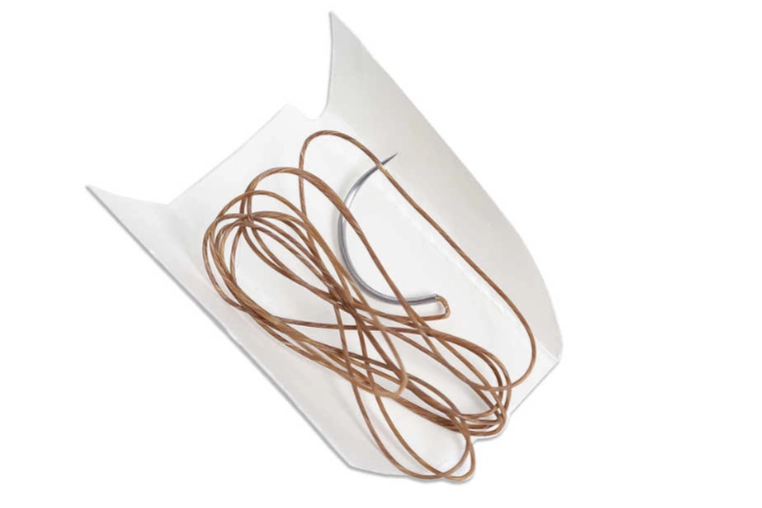The realm of medical technology is in a state of constant progression, introducing notable innovations that enhance patient care and the management of chronic conditions. Infusion sets, which are essential for patients requiring continuous medication administration, have significantly evolved. These devices have seen remarkable changes over the years to meet the needs of healthcare providers and patients alike. By delving into the most recent advancements in infusion set design, it becomes clear that there is a strong emphasis on improving functionality, comfort, and safety.
Pioneering Changes in Infusion Set Technology
Historical Evolution of Infusion Sets
The evolution of infusion sets began decades ago, with early designs primarily focusing on simplicity and basic functionality. The initial models were often cumbersome, leading to discomfort for patients and increased risk of complications such as infection or displacement. As medical technology advanced, so did the design and functionality of infusion sets. Enhanced understanding of human factors and user experience led to improvements in the materials used, allowing for better biocompatibility and reduced allergic reactions. The incorporation of safety features, such as adjustable flow rates and needle-free connectors, marked a significant turning point in ensuring patient safety and comfort.
Modern Advancements in Materials and Manufacturing
Recent developments in materials and manufacturing techniques have revolutionized the design of the infusion set. The introduction of soft, flexible tubing, and hydrophobic membranes greatly enhances the user experience, reducing discomfort during use. Advanced polymer materials are not only more effective at minimizing the risk of infection but also contribute to improved ease of handling. Manufacturing processes have also adopted more sophisticated technologies such as 3D printing and automated assembly, allowing for precise components that ensure that each infusion set meets rigorous quality standards. These advancements ultimately result in more reliable performance and a better overall experience for the patient.
Medco‘s Comprehensive Product Line
Diverse Range of Infusion Sets
Medco stands out for its diverse and comprehensive product line of infusion sets, catering to various medical device needs and specialties. Their infusion sets are designed for versatility, supporting different medication types and delivery methods. From standard infusion sets used in everyday healthcare settings to specialized products designed for home care and insulin administration, Medco has something to offer for every patient scenario. This diversity ensures that clinicians can choose the most appropriate solution tailored to the unique needs of their patients, promoting optimal treatment outcomes. Meanwhile, costumer can get many other professional devices from Medco, like blood analyzer or blood glucose meter.
Highlights of Medco’s Expertise
Medco demonstrates its expertise in producing high-quality infusion set solutions through a strong emphasis on research and development. The company makes substantial investments to understand the latest trends and technologies, enabling them to lead in infusion set innovation. Their commitment to quality assurance is reflected in their rigorous testing protocols, ensuring all products comply with international standards. By prioritizing user-centered design, Medco’s infusion sets are designed to be not only effective but also user-friendly, which is essential for guaranteeing patient compliance and satisfaction.

Customization Options and Flexibility
Recognizing that every patient has unique needs, Medco offers a variety of customization options for its infusion sets. This flexibility allows healthcare providers to tailor the infusion experience according to specific requirements such as fluid types, infusion rates, and patient comfort levels. Custom solutions can help alleviate common issues associated with discomfort and inconvenience during treatment, enabling patients to maintain a better quality of life. Medco’s ability to adapt its infusion set designs to fit various clinical environments and individual patient preferences exemplifies its dedication to personalized healthcare.
Improving Patient Outcomes with New Designs
Enhancing Patient Comfort and Compliance
A significant focus in the development of new infusion sets has been on improving patient comfort and adherence to treatment regimens. Manufacturers are increasingly integrating ergonomic features into their designs, ensuring that the infusion sets fit seamlessly into patients’ daily lives. This includes soft, flexible materials that adapt to the patient’s body movements, minimizing irritation and allowing for extended wear without discomfort. Greater consideration of the user experience often translates to higher compliance rates, as patients are more likely to adhere to their treatment plan when the devices are comfortable and easy to use.
Moreover, advancements in adhesive technologies are playing a critical role in enhancing comfort. These innovative adhesives help secure the infusion sets without causing skin irritation or requiring frequent changes. Additionally, intuitive user interfaces and clearer instructional materials are being incorporated to assist patients in understanding the operation and maintenance of their infusion sets. By prioritizing comfort and ease of use, manufacturers contribute to improved patient outcomes and overall satisfaction with their treatment.
Advances in Safety Features
Safety remains a critical priority in the design of infusion sets, with recent innovations focusing on enhancing safety features. A significant advancement is the integration of automatic shut-off mechanisms designed to minimize the risk of over-infusion or pump malfunctions. These built-in safety features not only safeguard patients but also instill greater confidence in healthcare providers when administering therapies.
In addition, modern infusion sets are increasingly utilizing smart technology to enhance safety. Many of these systems are now equipped with sensors that alert both patients and healthcare professionals to potentially hazardous situations, such as occlusions or disconnections. This integration of technology allows for real-time monitoring of the infusion process, enabling prompt intervention when necessary. Furthermore, the ongoing commitment to utilizing biocompatible materials reduces the risk of allergic reactions and infections, enhancing safety throughout the entire treatment regimen.
Through these innovations, the latest designs of infusion sets are positioned to meet the evolving needs of patients and healthcare providers alike. By improving comfort and safety features, these advancements not only foster better management of medical conditions but ultimately lead to superior patient outcomes and enhanced quality of life.

Future Directions in Infusion Set Innovation
Emerging Technologies and Research
As the healthcare landscape continually evolves, ongoing research and emerging technologies play a critical role in shaping the future of infusion set design. One such area of focus is the integration of digital health technologies, where infusion sets can connect with mobile applications or cloud-based platforms. This connectivity allows for real-time tracking of medication delivery, empowering patients to take an active role in their treatment. Such innovations enable healthcare providers to analyze patient data trends more efficiently, facilitating timely interventions and ensuring better adherence to prescribed therapies.
Furthermore, scientists are investigating more advanced materials to improve the performance and usability of infusion sets. For example, bio-responsive polymers that alter their characteristics based on the specific biological environment are being developed. This can lead to better compatibility and fewer adverse reactions, which is especially advantageous for patients with sensitivities or allergies to traditional materials. In addition, advancements in nanotechnology hold promise for enhancing infusion set properties, such as increasing drug delivery precision and minimizing the risk of blockages over extended use periods.
Robotics and automation in manufacturing are also revolutionizing the production process of infusion sets. This technology allows for higher precision in component assembly, which directly translates to better performance and reliability. Such enhancements ensure that each infusion set operates as intended, reducing the risk of complications during a patient’s treatment regimen. Overall, the fusion of emerging research and technologies is driving a transformative shift in developing more effective, patient-centered infusion sets.
Anticipated Trends and Market Demands
The market for infusion sets is witnessing a shift in demand driven by several trends that cater to the diverse needs of patients and healthcare providers. One such trend is the growing preference for personalized medical solutions. Patients increasingly seek customizable infusion sets that can be adapted to their specific medical and lifestyle requirements. This trend is pushing manufacturers to innovate and offer a range of configurations concerning flow rates, materials, and infusion delivery methods.
An important aspect of the anticipated market demand is the increasing emphasis on sustainability and environmentally friendly practices within medical disposable manufacturing. Consumers and healthcare institutions are becoming more conscious of the environmental impact of medical waste. Consequently, the demand for infusion sets made from biodegradable or recyclable materials is likely to rise. Manufacturers that focus on sustainability not only gain a competitive edge but also align with the evolving ethical standards of healthcare.
Moreover, as the incidence of chronic diseases rises, there is an increasing demand for advanced infusion sets tailored for home care use. The movement towards decentralized healthcare—where patients receive treatment at home instead of in traditional healthcare environments—necessitates infusion sets that are not only user-friendly but also dependable over extended durations. This shifts the emphasis to products that integrate safety, efficiency, and ease of use, thereby enhancing complex care routines for patients managing chronic conditions.
Finally, the integration of telehealth into the therapeutic landscape will shape the future demand for infusion sets. As remote monitoring and virtual care become more standard, there is an emerging necessity for infusion set innovations that can seamlessly align with telehealth platforms. Innovations that facilitate virtual patient management and provide healthcare professionals with remote access to real-time infusion data are likely to dominate the market, offering enhanced patient safety and continuous care.




